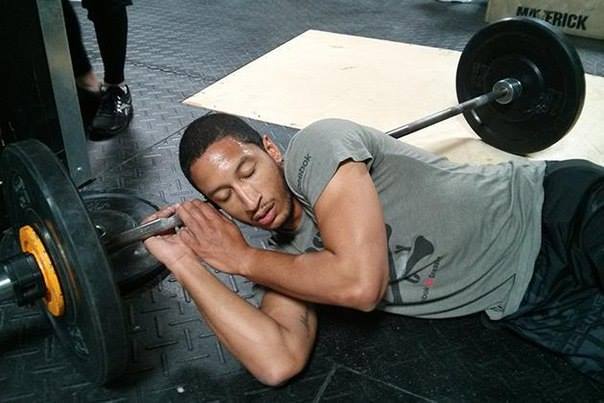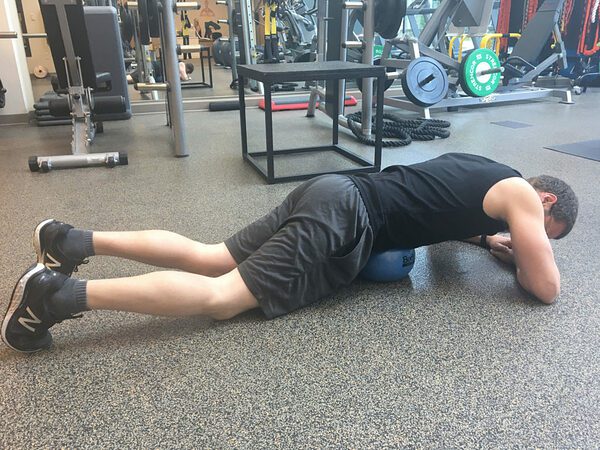The New Rules of Sleep for Athletes
RecoveryABOUT THE AUTHOR

Phil White
Phil White is the co-author of Waterman 2.0 (with Dr. Kelly Starrett), The 17 Hour Fast (with Dr. Frank Merritt), Unplugged (with Dr. Andy Galpin and Brian Mackenzie) and Game Changer (with Fergus Connolly). He writes for Train Heroic, HANAH, Momentous, XPT, Onnit, StrongFirst, TRX, McGregor FAST, and other leaders in human performance. In a previous life, Phil was nominated for a screenwriting Emmy. He lives with his wife and two sons in the mountains of Colorado. Connect with Phil at www.philwhitebooks.com
Sleep is also imperative if your clients or athletes are going to commit what they’re learning to long-term memory.
A study conducted by Matthew Walker and referenced in his excellent book Why We Sleep compared undergrads who prepared for a test over several evenings and went to bed at a reasonable time versus those who pulled a pre-exam all-nighter. The results showed that “there was a 40 percent deficit in the ability of the sleep-deprived group to cram new facts into the brain (i.e. to make new memories).”
Most of the studies on this topic have been done with classroom students, but the gym is an equally rich learning environment (and perhaps more so, particularly for kinesthetic learners). Every time an athlete does something physical, it’s an expression of skill, and each skill has an intensely cognitive component.
Simply learning a new motor pattern or honing an existing one in the gym or on the practice field is only half the job when it comes to skill acquisition and progression. For it to take, getting enough premium quality shut-eye is imperative.
In sports as in life, we like to put things in nice little compartments. For example, sleep is one, nutrition another, and performance still another. But human beings and the world we live in don’t work in this reductionist, myopic way. In reality, everything is everything. If one of your athletes is getting consistently poor sleep, it’s not just going to make them feel tired, but will also undermine every facet of their health and wellbeing.
Sleeping less than six hours compromises a player’s energy metabolism to the point that they’re practically pre-diabetic. As I explored in my book with Dr. Frank Merritt, The 17 Hour Fast, sleep deficit also disrupts the balance of ghrelin and other hunger/satiety-related hormones. This makes a tired athlete likely to overeat, even though they don’t necessarily need more food. And because sleep deprivation compromises decision-making ability, they might default to choosing junk food that’s going to further undermine recovery.
Inadequate rest has also been directly correlated with increased injury risk. Matthew Milewski from Boston Children’s Hospital discovered that youth athletes who got eight or more hours of sleep a night were 68 percent less likely to be injured than their sleep-shorting peers.

Then there’s the link between sleep and performance itself. A study of Stanford’s swim team by Cheri Mah found that swimmers who got more sleep were .51 seconds faster per 15 meters, reduced their off-the-blocks reaction time by .15 seconds, and knocked a tenth of a second off each turn time. While this was a small sample, it is indicative of a simple truth: sleep more to perform better.
So having made the case about why you should encourage your athletes to get at least seven to nine hours of sleep, here are a few tips to make sure they’re not just achieving duration, but also quality slumber:
// Make Some Noise
White noise, that is.
Certainly, the clamor of a busy city street, the blaring of fire engines and police cars, and that neighbor’s dog that just never stops barking are detrimental to sleep. But certain frequencies can block out the aforementioned interruptions and actually enhance your slumber.
If you’re lucky enough to live within striking distance of the ocean or a river, then open your windows to let these soothing sounds in. Should your bedroom back to your garden, you could recreate the same effect with a water fountain. Alternatively, consider buying a white noise machine. Or if you want to go new school, give Bose’s Sleepbuds, which come preloaded with 10 different sounds to help you fall and stay asleep, and an alarm to wake you back up again. Alternatively, use the headphones you already have to play a long piece of relaxing music, such as Max Richter’s eight-hour opus Sleep. While more research is needed, some studies have found binaural beats to be an effective sleep aid, too.
If you don’t like the feeling of wearing headphones in bed, then just go with a pair of soft silicone earplugs instead. No need to spend too much on these – $10 should get you at least six pairs with the highest noise reduction (NR) rating of 33 decibels.
// Go with Your Gut (Smash)

Doing any kind of mobility work before bed will provide a calming effect, but you can kill two birds with a single proverbial stone if you add gut smashing to your evening routine.
What Dr. Kelly Starrett calls “gut smashing” sounds unpleasant at face value and, to be candid, it sure can be, particularly if you’ve been doing a lot of heavy singles, doubles, and triples, get ups, and rotational work (med ball twists, TRX Rip Trainer, etc.). However, any initial discomfort you feel from slowly rolling a ball across your abdomen is more than balanced out by the relaxation inducing effects you’ll achieve if you stick with it.
This is because gut smashing (or, as Roll Model author and Tune Up Fitness founder Jill Miller calls it, abdominal massage) allows you to stimulate the vagus nerve, which has a direct impact on the autonomic nervous system. Doing five to 10 minutes of this simple exercise before bed can help you transition from sympathetic high alert (fight/flight) to parasympathetic recovery (rest/digest).
Back to the second of those two birds. Gut smashing will also help you feed some slack into your awfully tight abdominal tissues. Many athletes find this releases the rear attachment of the psoas, which can help relieve lower back stiffness/pain (concentrate on the area to each side and slightly below your belly button to find the trigger points). Moving the ball lower on your abdomen can enable you to get into those pesky high hip flexors as well.
// Just Breathe
Another way to alter your nighttime neurological, physical, and mental state in just a few minutes is breath work. As your breath is always available and accessible, you can use it to manipulate your physiology no matter where you are, with no extra equipment required.
While there are many methods out there, try this one from Art of Breath co-founder Brian Mackenzie. Lie down on a couch or your bed (with no tech tools within reach!) and take a five second nasal inhale, followed by a 15 second breath hold, and finally a 10 second nasal exhale. Repeat the cycle for at least 10 minutes. If you feel stressed out by the hold phase or find it hard to slow your exhale down, this is an indication of high sympathetic tone. Try to stick with the suggested breathing pattern for a few minutes and you may well start to become more comfortable with it. If not, then reduce the length of the hold.
The very act of being cognizant of your breath is relaxing and you’ll still help yourself cycle down. As breath/state expert Kasper van der Meulen has said, “Breathing is the remote control for the brain and nervous system.” And now you have an easy way to start pushing its buttons.
// Read to Achieve
Everyone has a preferred way to unwind in the evening, but not all of these are quite as beneficial as we might believe, and some might actually be counterproductive.
By now you’re probably aware that exposure to bright LEDs and the blue light put out by so-called “smart” phones, tablets, laptops, and other tech toys actually interferes with sleep. So if surfing social media channels or texting is off limits, what should you recommend your athletes do at night? One word: read.
A 2009 study by British neuroscientist David Lewis and quoted by Dr. Michael Breus in his brilliant book The Power of When found that out of all activities that contribute to what he calls “the calming effect,” reading is the clear winner. A mere six minutes of reading time was all that participants required to reduce their perceived stress levels by a whopping 68 percent.

But be sure to caution your athletes against reading on an electronic device. Doing so has been found to delay the onset of restorative, slow wave sleep by up to 30 minutes – bad news for an athlete’s body and brain. Suggest picking up a paperback or hardback instead.
In addition to getting ahead of the sleep game, it’s worthwhile assessing your athletes on the readiness scale. To help, the TrainHeroic platform offers a comprehensive yet intuitive survey that asks clients to evaluate their mood, stress, soreness, energy, and yep, you guessed it, sleep quality. Such subjective measures can be paired with more objective ones to create a fuller picture of athlete preparedness. You can then make tweaks to both recovery and programming to ensure that your training group is adapting to appropriately dosed stressors.
Are you a better coach after reading this?
More coaches and athletes than ever are reading the TrainHeroic blog, and it’s our mission to support them with useful training & coaching content. If you found this article useful, please take a moment to share it on social media, engage with the author, and link to this article on your own blog or any forums you post on.
Be Your Best,
TrainHeroic Content Team
HEROIC SOCIAL
HEROIC SOCIAL
TRAINING LAB
Access the latest articles, reviews, and case studies from the top strength and conditioning minds in the TH Training Lab

